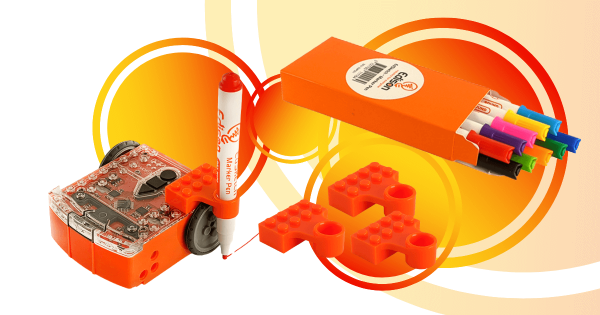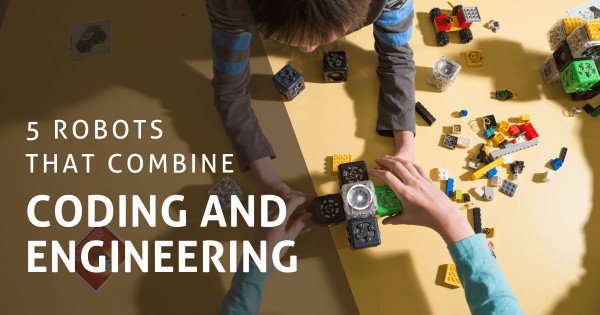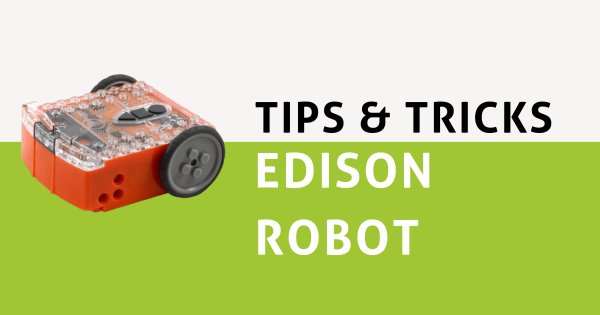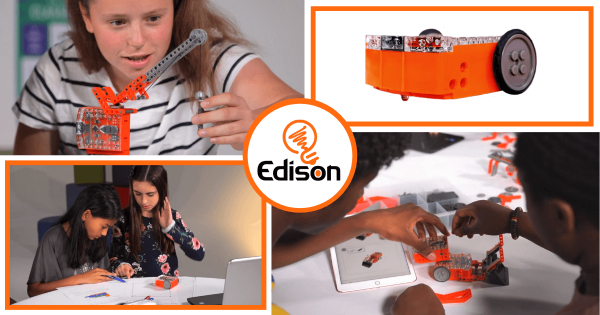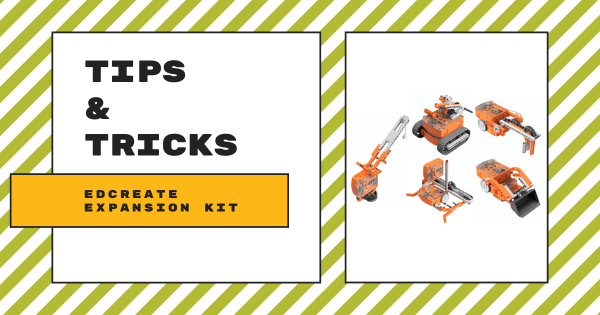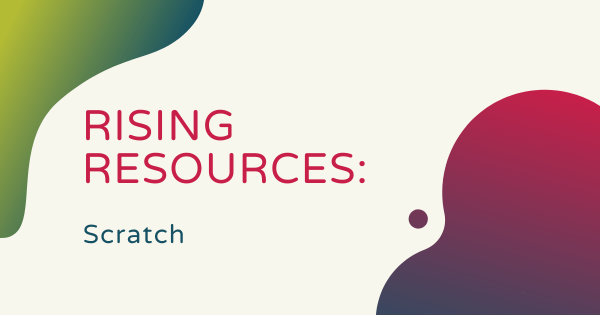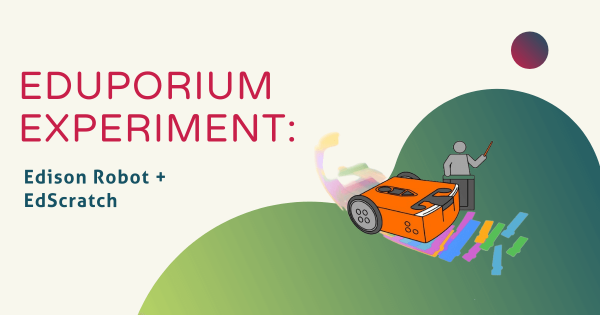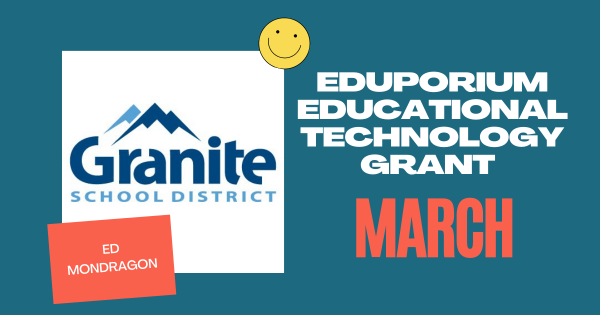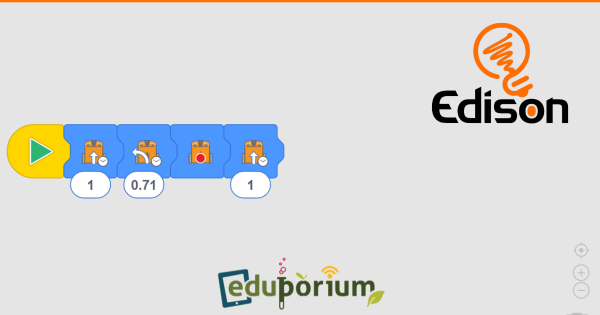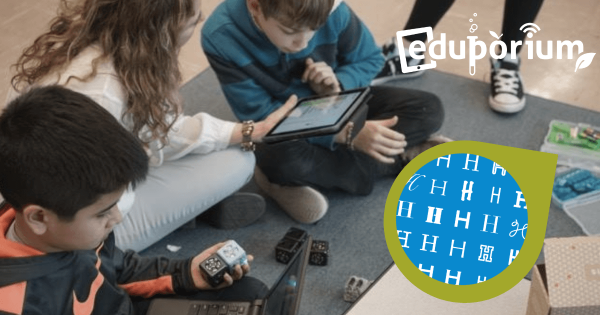The EdSketch add-on for the Edison Robot is a low-tech STEAM accessory that allows students to program Edison to draw or write. Like the EdCreate Packs, the EdSketch Kit is a super engaging and beneficial expansion kit that helps you scale up any Edison Robot lesson. Easily add an artistic component to coding or illustrate a concept related to the
Edison Robot
The Edison Robot is one of the most versatile and reliable classroom robotics tools in the education world. Starting with its accessibility, students across the K-12 spectrum could use the Edison in various coding activities and experiments. This helps make your Edison a true K-12 robotics solution. Starting in the early grades, including kindergarten and early elementary school, kids can use their Edison without a screen. This unique robot is pre-programmed to read and react to barcodes that program it in certain modes. Students can line their Edison Robot up next to a barcode, press its record button three times, and then it will drive over the barcode. Once on the other side, the robot is programmed in that specific mode. For this robot, the Edison barcodes include clap-controlled driving (responding to sound), following lines, staying within borders, and more.
In addition to the screen-free barcode programming, older students can also progress to digital coding. There are three main coding environments, which include EdBlocks, EdScratch (based on Scratch), and EdPy (based on Python). Of course, EdBlocks and EdScratch are the more simplistic environments and ideal for elementary students. Then, once they're up in middle school or even high school, students can start using EdPy to program their Edison in Python. Best of all, each one of these Edison coding environments is accessible online. Students don't need any additional downloads to code and learn with this educational robot. Plus, there are various accessories available as well, including the EdSketch Kit. And, for any bigger school STEM programs or afterschool clubs, Edison Class Packs are a great option.
-
Eduporium Weekly | 5 Robots That Combine Coding & Engineering
These days, not only can instructors utilize robotics tools to teach students coding and computational thinking skills, a lot of them have an engineering element within them as well. We think it’s great that educators and children can combine these two key areas of STEM by first building their robot (like any of these five prime examples) and then programming -
Tips & Tricks | How To Program The Edison Robot
There are three main programming environments kids can use to code the Edison Robot. They’re known as EdBlocks, EdScratch, and EdPy, and all of them are completely free to use directly from your browser. There’s no need to download any additional software for coding with the Edison. Kids can also choose from pre-created barcodes and programs or design their own! -
Edison Robot Projects: Screen-Free Simplicity To Text Coding
When teaching STEAM and coding skills with the Edison Robot, its unique features make it super popular among today’s teachers. This starts with its compact size, which helps to make the Edison a true 1:1 STEM solution in many cases. Some say it’s shaped like a brick but it’s also very dense and tough, which makes it a strong option -
Tips & Tricks | The Edison Robot EdCreate Expansion Kit
The EdCreate Expansion Kit for enhancing Edison Robot STEAM projects helps students focus on construction with its 115 building parts, including blocks, gears, wheels, pegs, and more that are each compatible with both the Edison and LEGOs. The kit also includes classroom project guides and instructional videos that show students how to construct the five EdBuilds. -
Rising Resources | The Scratch Coding Platform
Though it’s been around for a while, Scratch remains an extremely reliable coding platform that teachers can use to introduce elementary students to programming and meet them where they are. It’s a super strong beginner-level language with a lot of functionality and was created around graphical coding to serve as a great introductory classroom option for K–8 students. -
Eduporium Experiment | EdScratch + the Edison Robot
EdScratch is very user-friendly and designed for students as young as 10 years old. Students can use it to explore the more challenging aspects of coding, such as changing the input commands within blocks and setting their own values for distance, time, and speed. Also, whereas EdBlocks is icon-based, EdScratch enables hybrid coding with the Edison Robot. -
Enhancing CS Instruction: Learn About Our Latest Grant Awardee
For this past month, we are happy to present this award to Ed Mondragon, who runs the CTE department with the Granite School District in Salt Lake City, Utah! Like so many educators, Ed is now searching for ways to make remote learning as meaningful as possible for each of his students and for all the committed teachers he works -
What's New with the Edison Robot? A Whole New Language
Microbric, the creators of the Edison Robot, recently released a new programming language for Edison known as EdScratch! With EdScratch, which is based on MIT’s Scratch language, students can practice drag-and-drop programming with a lot of functionality and we’re here to make sure you know about it and encourage you to give it a try! -
Our New Partnership with the Highlander Institute is Taking Off!
After six weeks of using various STEM tools in their learning, students will be in the spotlight in less than two weeks, so we thought we’d check in and see how things have been going! Last Friday, we visited six different elementary school classrooms, where students were using different STEM tools—click to see how it went!




